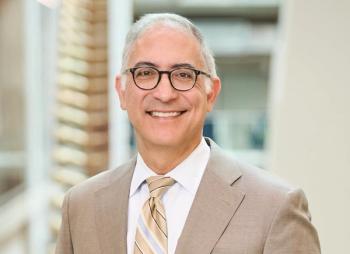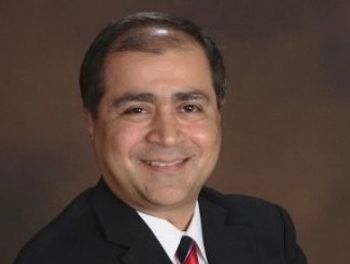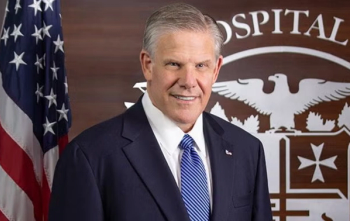
States vie for funds in $50B rural health program, and the deadline is coming
The Trump administration launched the grant program, and states are running out of time to apply. Hospitals are working with states to make the best pitch.
States are scrambling to prepare applications in the federal government’s new $50 billion Rural Health Transformation Program.
Congress and President Trump’s administration created the program during the summer, inserting it in the federal tax and spending package approved in July. Part of the rationale for the creation of the program was to win support from lawmakers concerned
Lawmakers created the program quickly, and states have very little time left to apply.
Patricia Boozang, senior managing director at Manatt Health, has studied the rural health program and acknowledged the rapid pace states must craft their pitches for aid.
“This timeline is incredibly fast,” she says.
“There's a balancing act here of having a bold and innovative and transformative plan, but also a plan that you can implement successfully as a state,” Boozang says. “And you have to put that together at this breakneck pace.”
The $50 billion fund includes two parts. Half of the money will be distributed equally among all states with approved applications, the Trump administration says. That has raised some eyebrows, since Texas would get the same amount of money in that pool as Delaware.
As for the other $25 million, states have to develop proposals aimed at improving health care in rural areas. Dr. Mehmet Oz, the CMS administrator,
“We want transformative big ideas that will dramatically change our expectations of the rural health care system,” Oz said.
The $50 billion will be distributed over five years.
- Read more:
Strategies for the $50B rural health fund
Sustainable programs
States and hospital systems have had to navigate the demands of a new program with little time to put together a plan.
Bea Grause, president of the Healthcare Association of New York State, told Chief Healthcare Executive® in a recent interview that the timeline has been daunting.
“There are challenges with the construction and the design of the program,” Grause said. “It was kind of a last ditch effort and hastily put together in an effort to secure enough Senate votes to get it to pass.”
Since states are vying with each other for a share of the rural health funding, the competition looks to be intense.
"You have to be able to implement in order to actually get the money. So I think that's certainly creating this sense of competition." Boozang says.
Hospital executives say that they recognize that they need to work with states to develop proposals that will be appealing to the administration and viable for the long haul. They weighed some of the opportunities and challenges of the federal program during a summit on rural health care at Sanford Health earlier this month.
“We can waste a lot of money very quickly, unless we're really thoughtful about investing it in programs that actually are not only sustainable, but going to get us to a different place,” Conroy said.
Dartmouth is based in New Hampshire but also serves patients in Vermont. Conroy said the two states are taking different approaches in their proposals for aid in the rural health program. And she said she’s concerned about the challenge of crafting plans that are sustainable in the long run.
Conroy said she’s pushed for applications centered on technology, including telehealth capabilities. She said these are areas “that we know are actually important for rural health care, and also things that we know we all need to invest in.”
“I think it's pretty simple,” Gassen said at the Sanford conference. “We need to focus on how to leverage those dollars to do something that is a one-time cost.” And it should involve a project that states and health systems wouldn’t be able to tackle without the funding.
Health system leaders say projects involving the use of AI to improve health systems and services for patients could be a winning play.
“Maybe one of the greatest places to be putting those dollars is to be able to transform things from a technological perspective,” Gassen said. “How do we provide access to artificial intelligence in ways that many of these hospitals and health systems and provider groups across the country would never be able to afford?”
“Let's make those investments up front, and let's facilitate the ongoing investment in that space,” he added. “Do something that actually transforms us forward. Sprinkling a few dollars here and there into something that's not yet working, isn't the right place to put those dollars.”
Health systems need to partner effectively with states on applications, and that does pose some challenges. States have different ideas on priorities and strategies for rural health, and health systems serving communities in several states may be looking at significantly different proposals for aid.
“We need to be able to come together, come together and be able to coalesce and say these are the needs,” Gassen said. “These are the opportunities. How do we make real transformational input that allows us to move forward in a way that but for the infusion of those dollars, we couldn't do?”
Concerns over funding
While health systems are anxious to secure funds in the Rural Health Transformation Program, hospital leaders say the aid still doesn’t offset the losses in Medicaid cuts in the coming years. The Congressional Budget Office has projected Medicaid spending will drop by $1 trillion over the next 10 years.
In addition, hospitals expect to see more cost pressures, with
Grause said the prospect of federal funds to support rural healthcare is “welcome,” especially with pending cuts in Medicaid.
But she added, “I would describe it as a Band-Aid over a bullet hole.”
Rick Pollack, president and CEO of the American Hospital Association, said at the Sanford rural health summit that the reduced support for Medicaid far surpasses the aid from the rural health program.
“The One Big Bill cut Medicaid a trillion dollars over a 10-year period,” Pollack said. “This transformation fund is $50 billion over five years. OK, now, I never thought I would say $50 billion is a modest investment in anything, but put it in perspective.”
Many rural hospitals have been struggling for years. About
While it’s possible that the new federal health program could help these rural hospitals, Oz said the federal government isn’t looking for proposals to help providers pay their bills.
Oz has suggested that rural hospitals need to form partnerships with larger health systems to help offer more services and remain viable. Oz said those partnerships didn’t have to involve large systems acquiring smaller hospitals, but he said there could be opportunities for more collaboration.







































